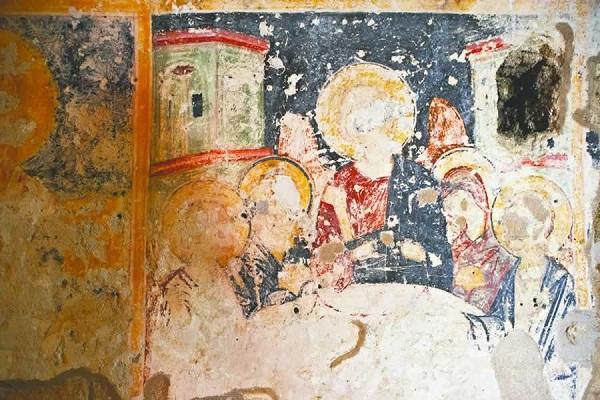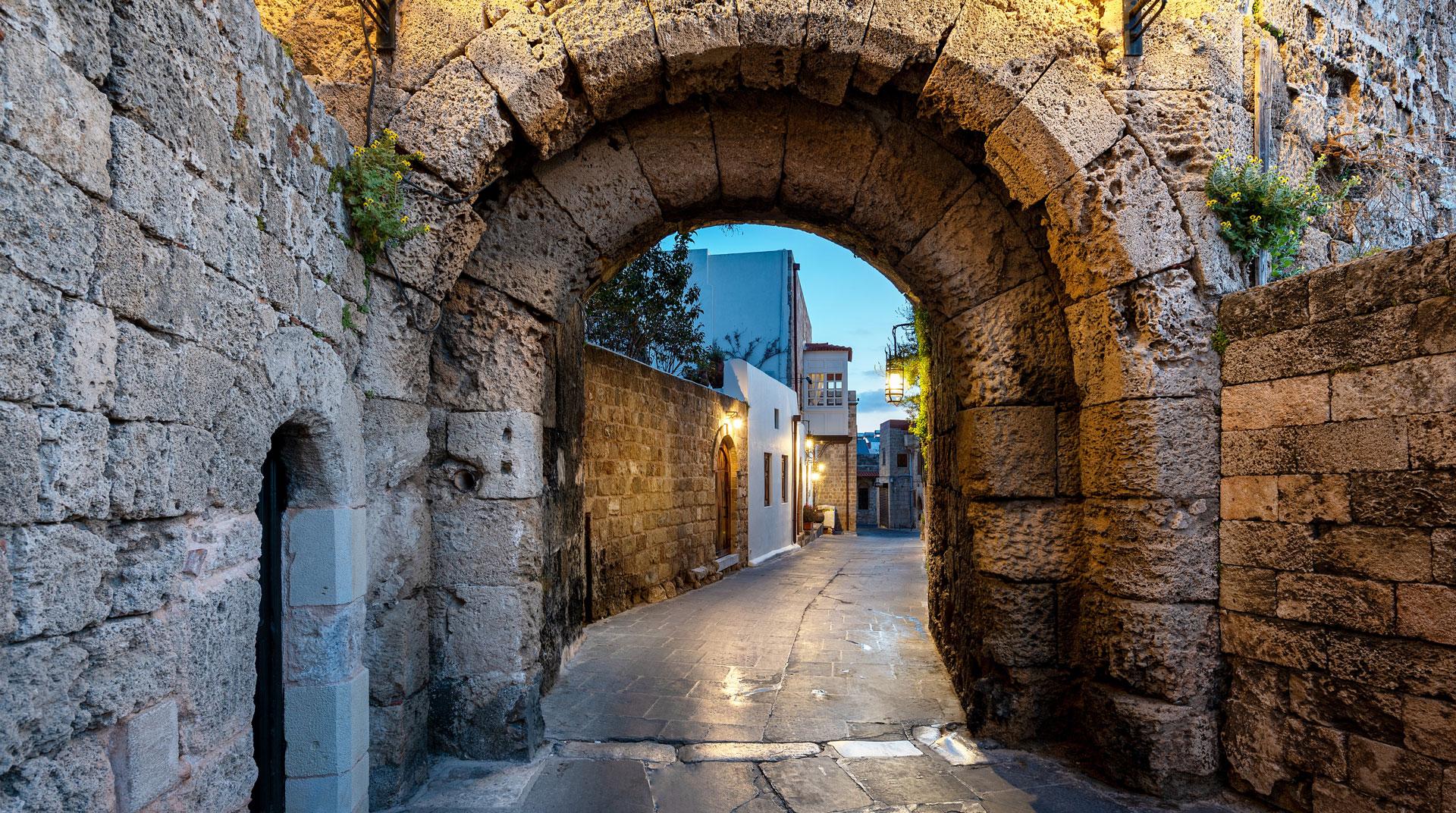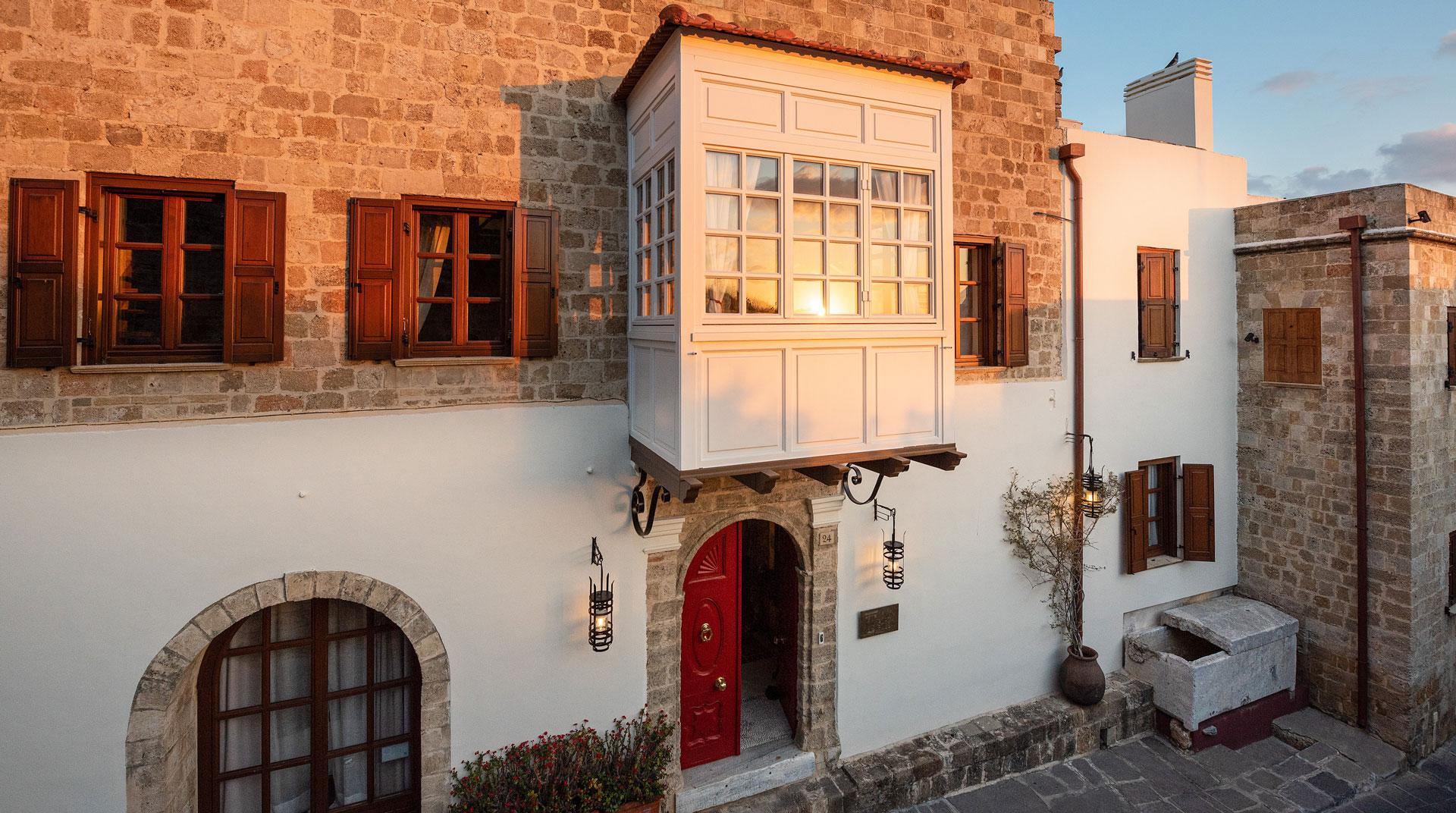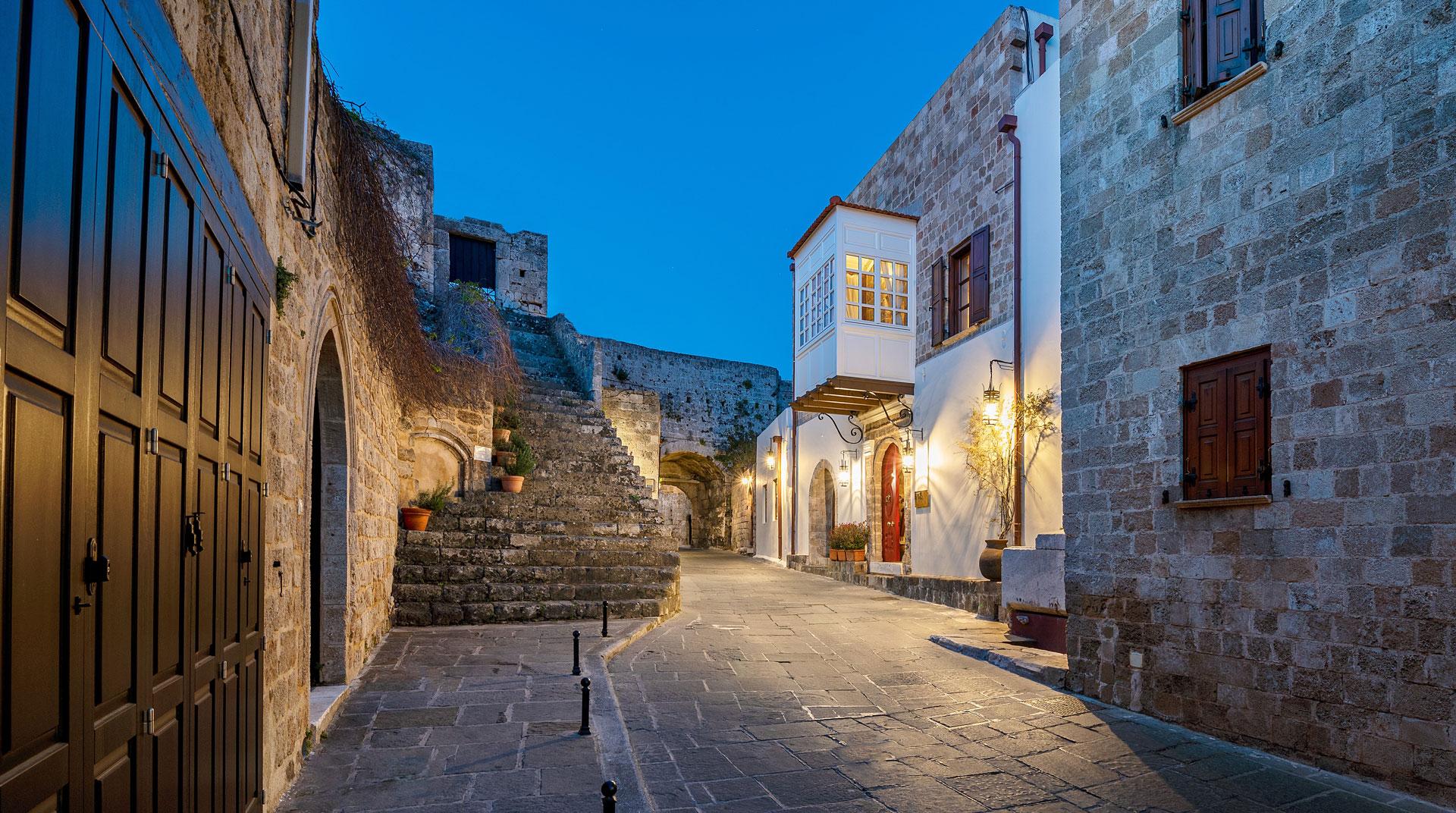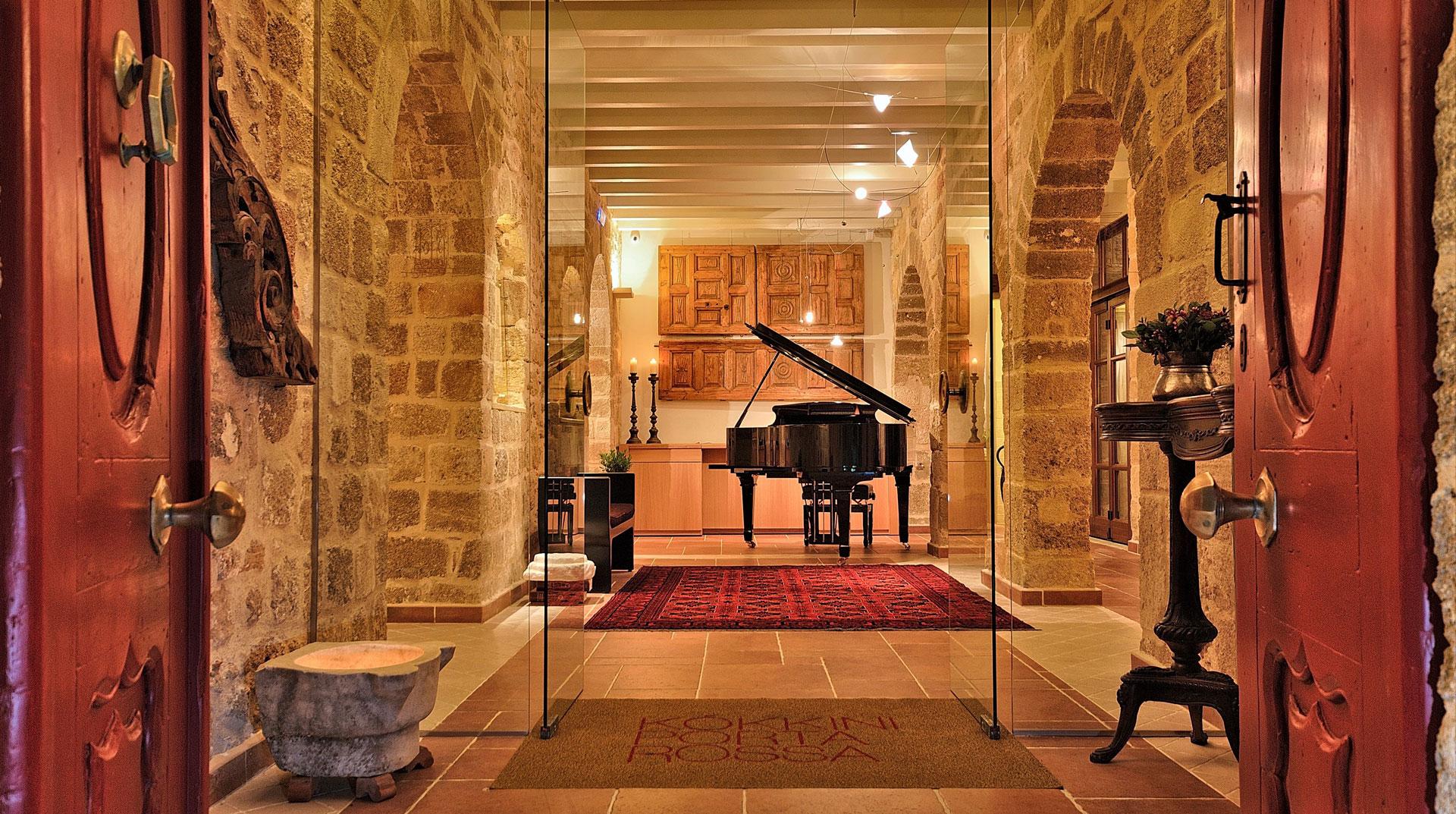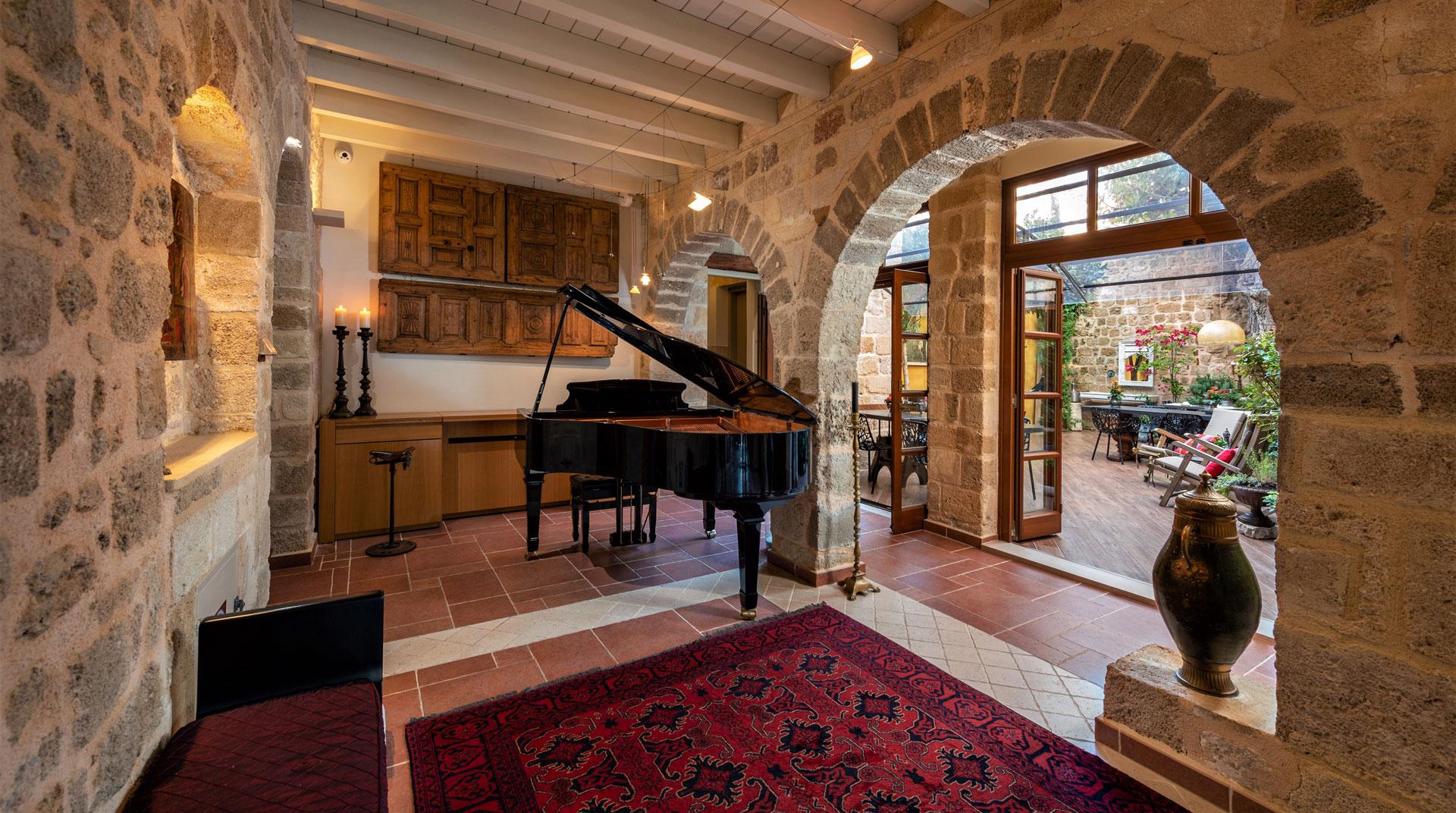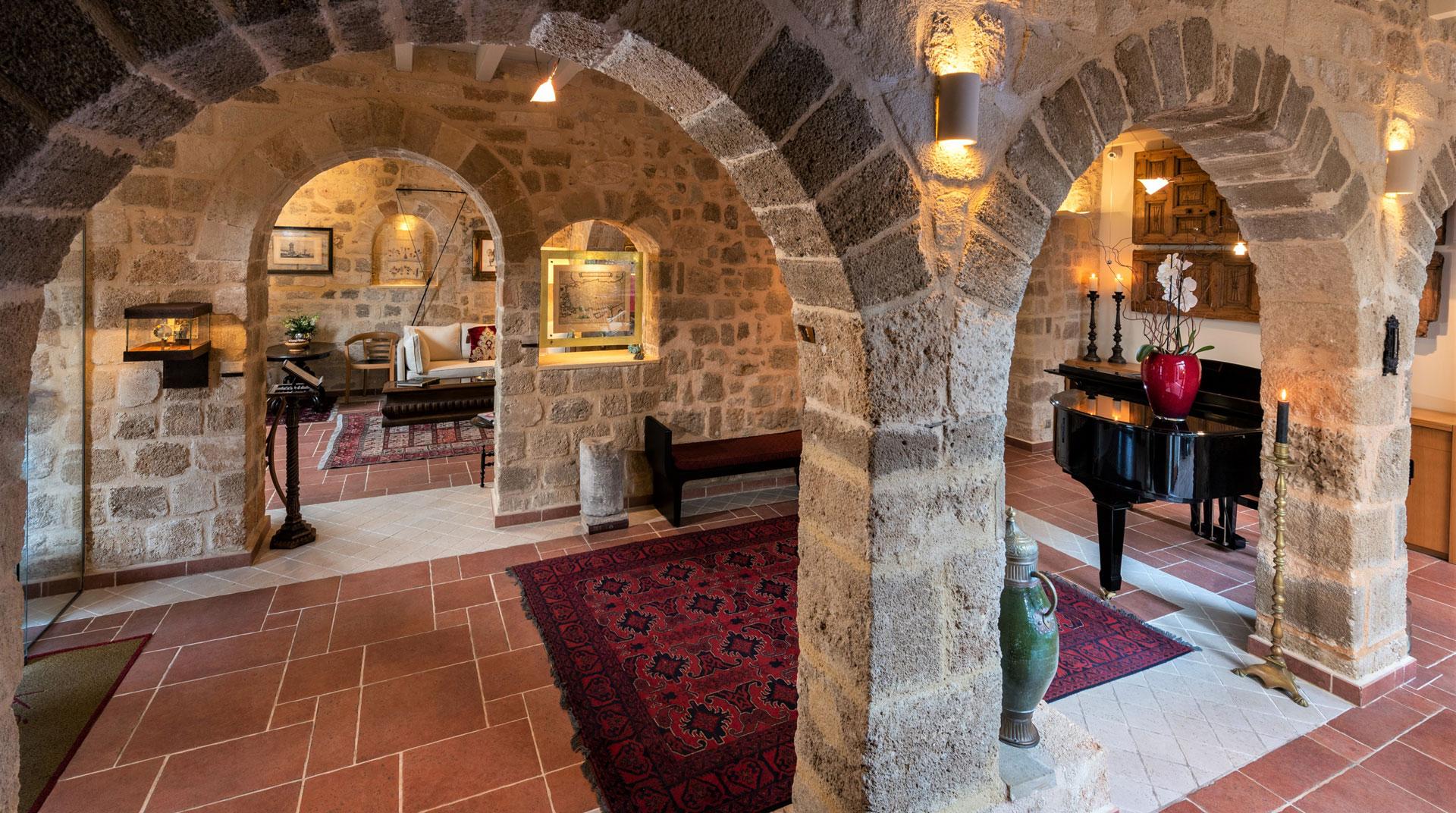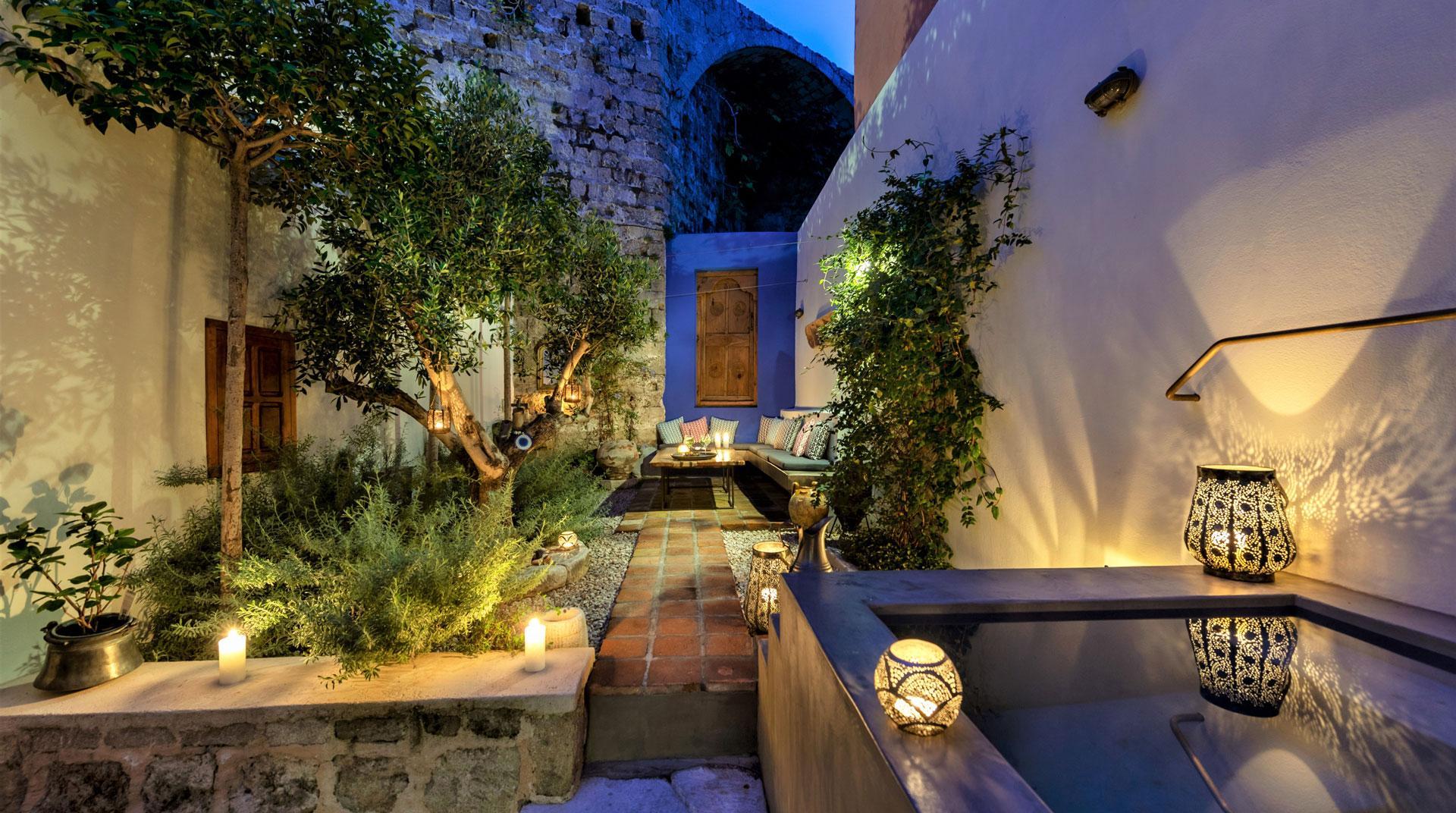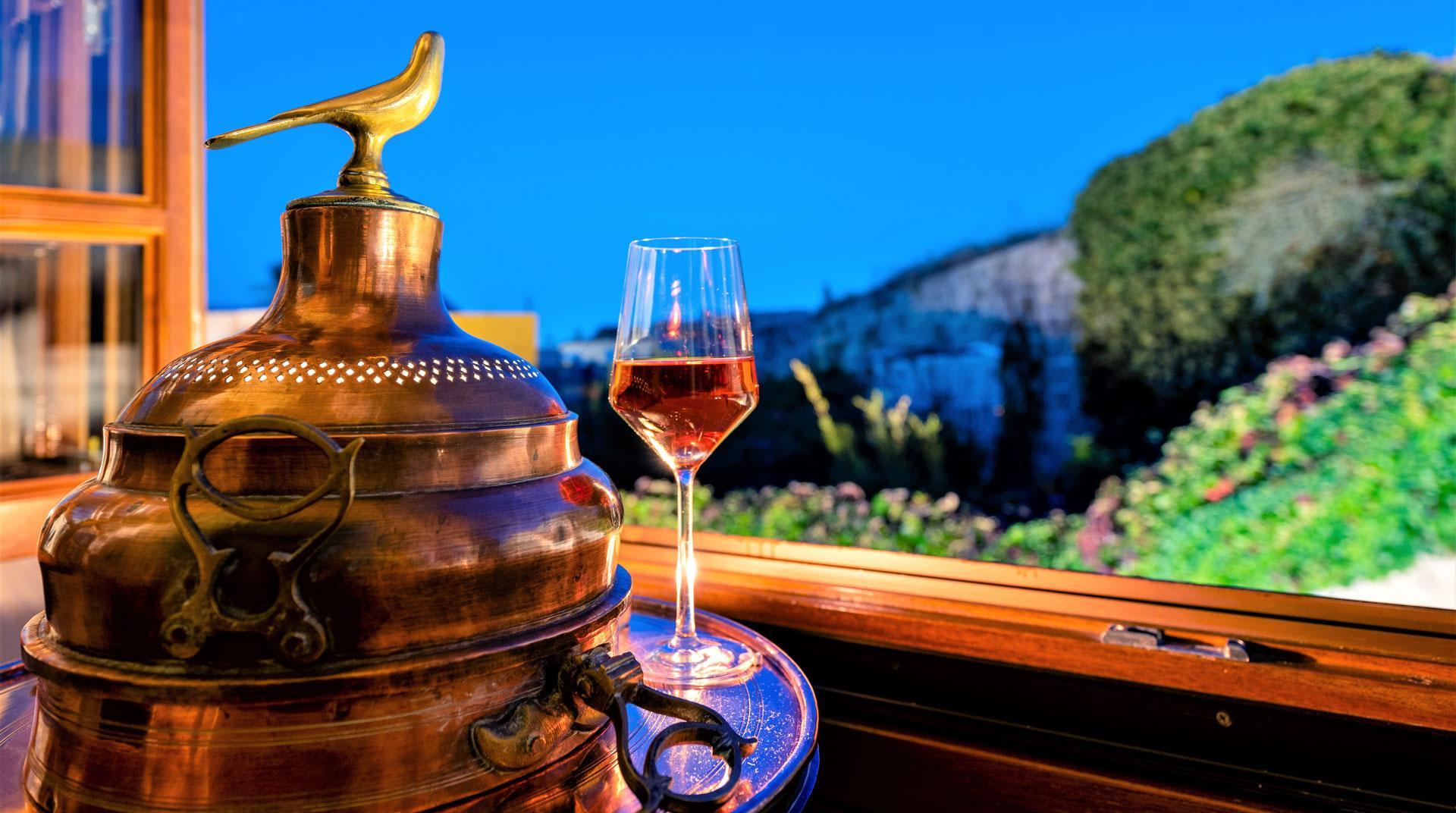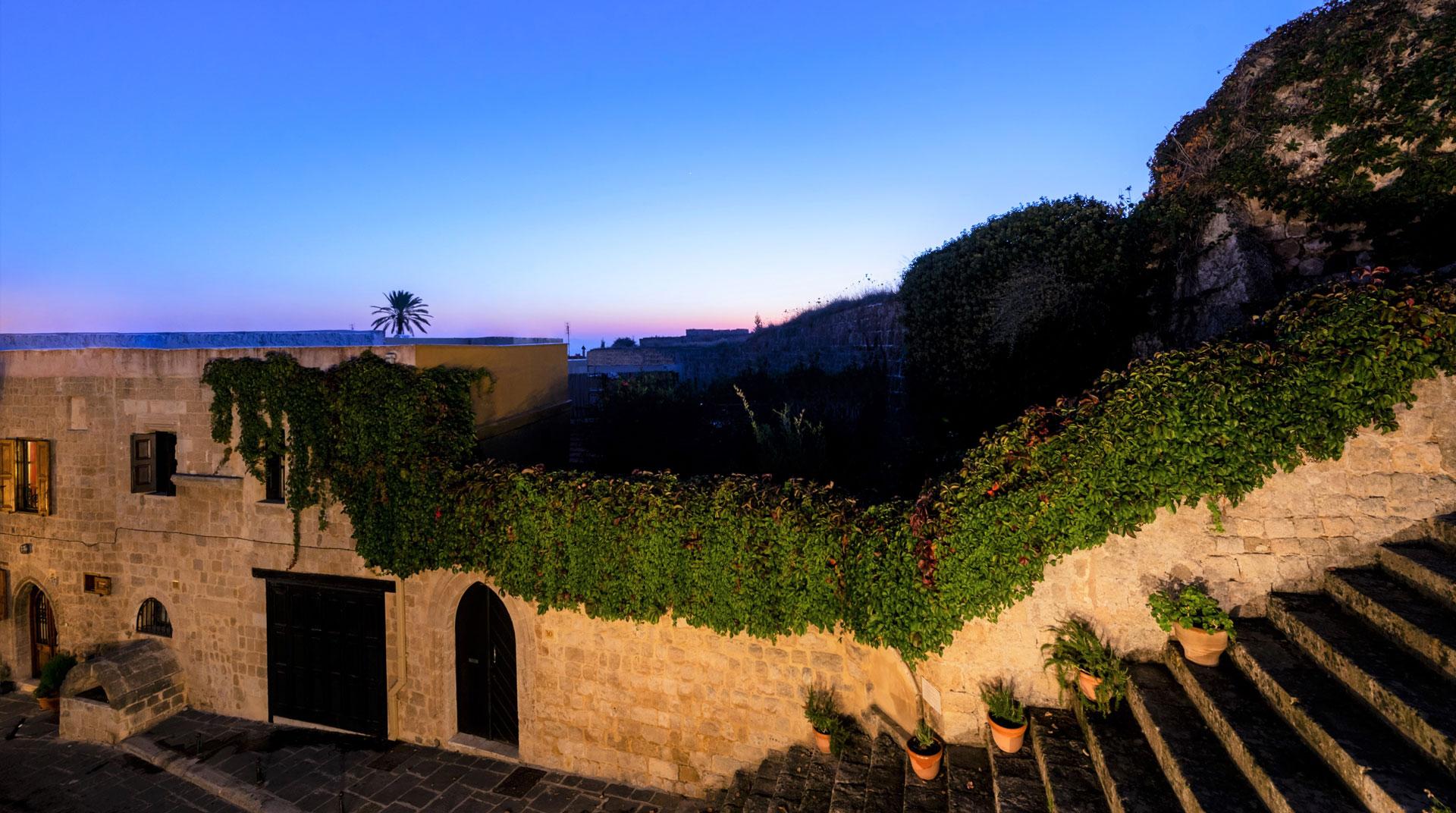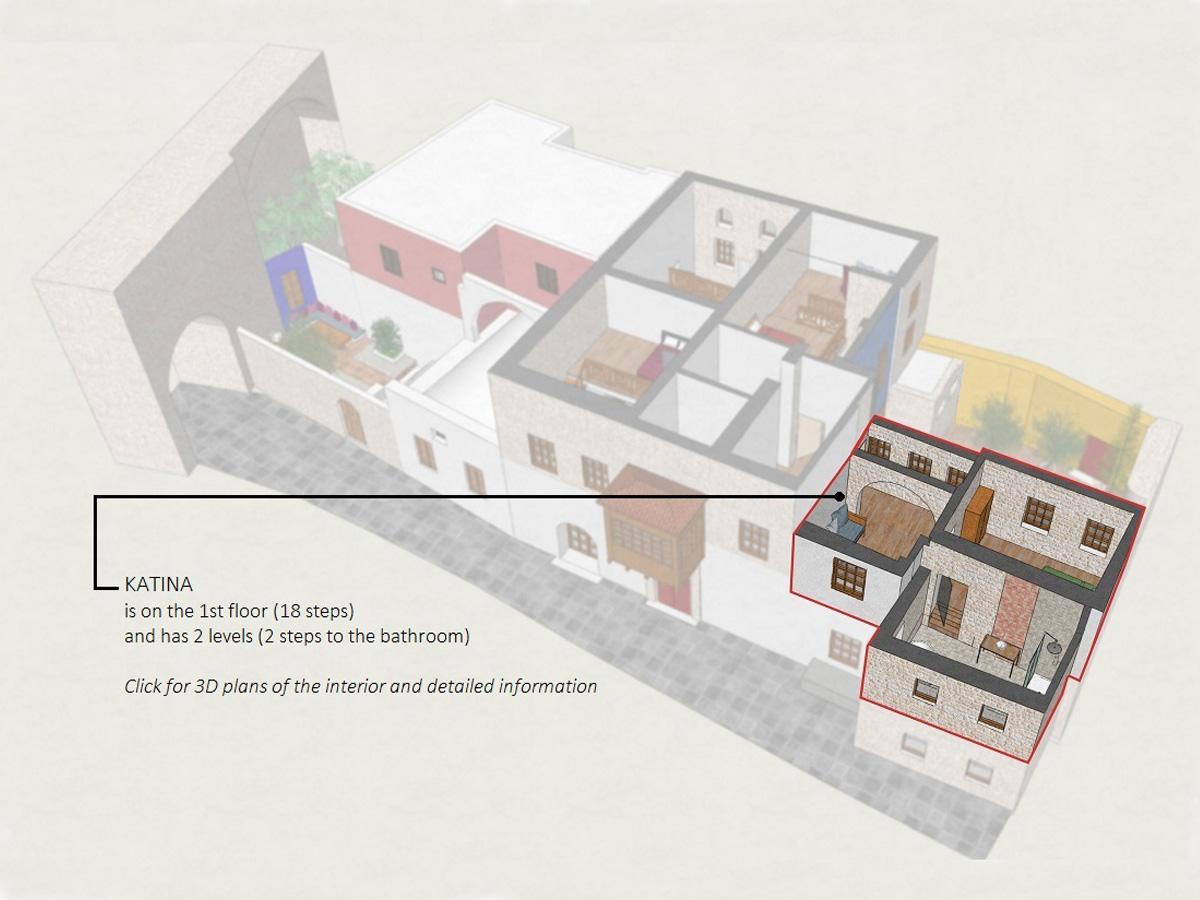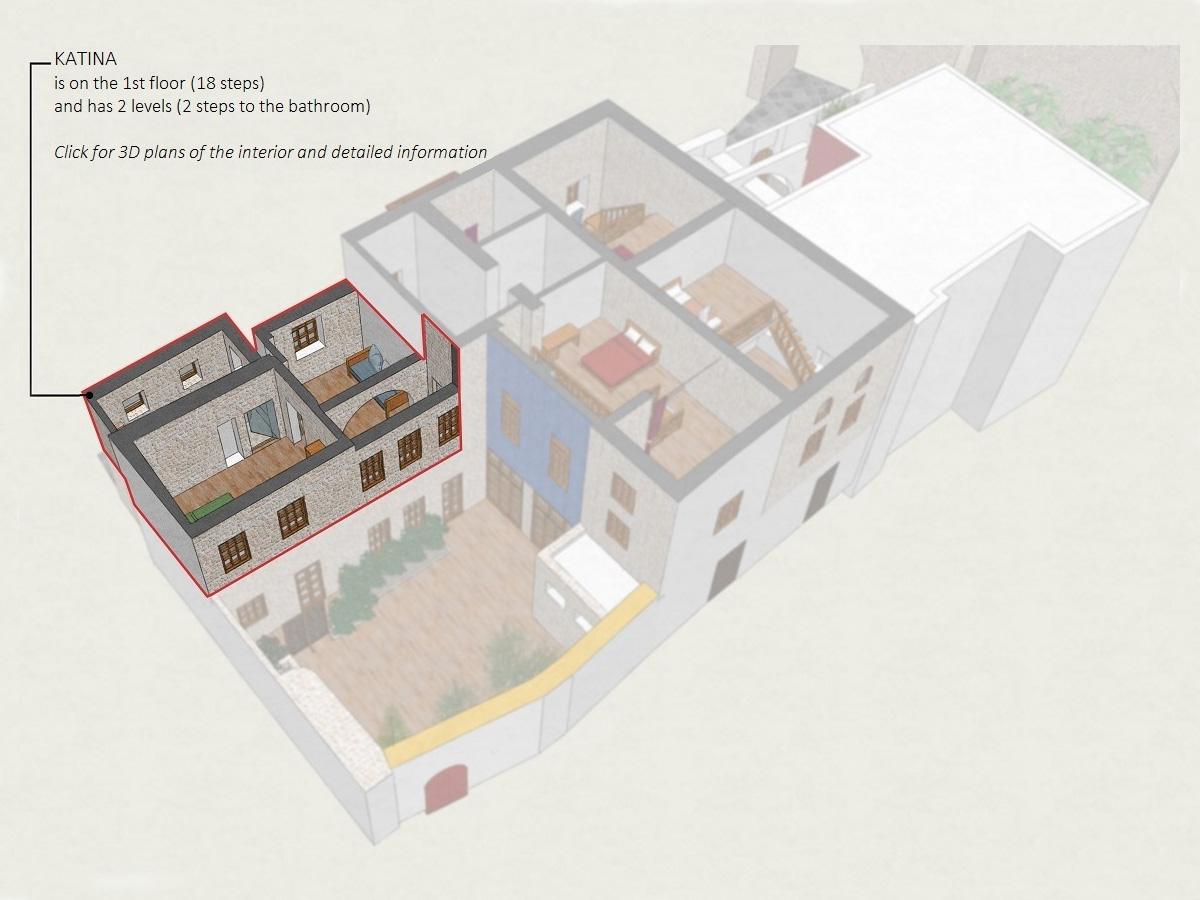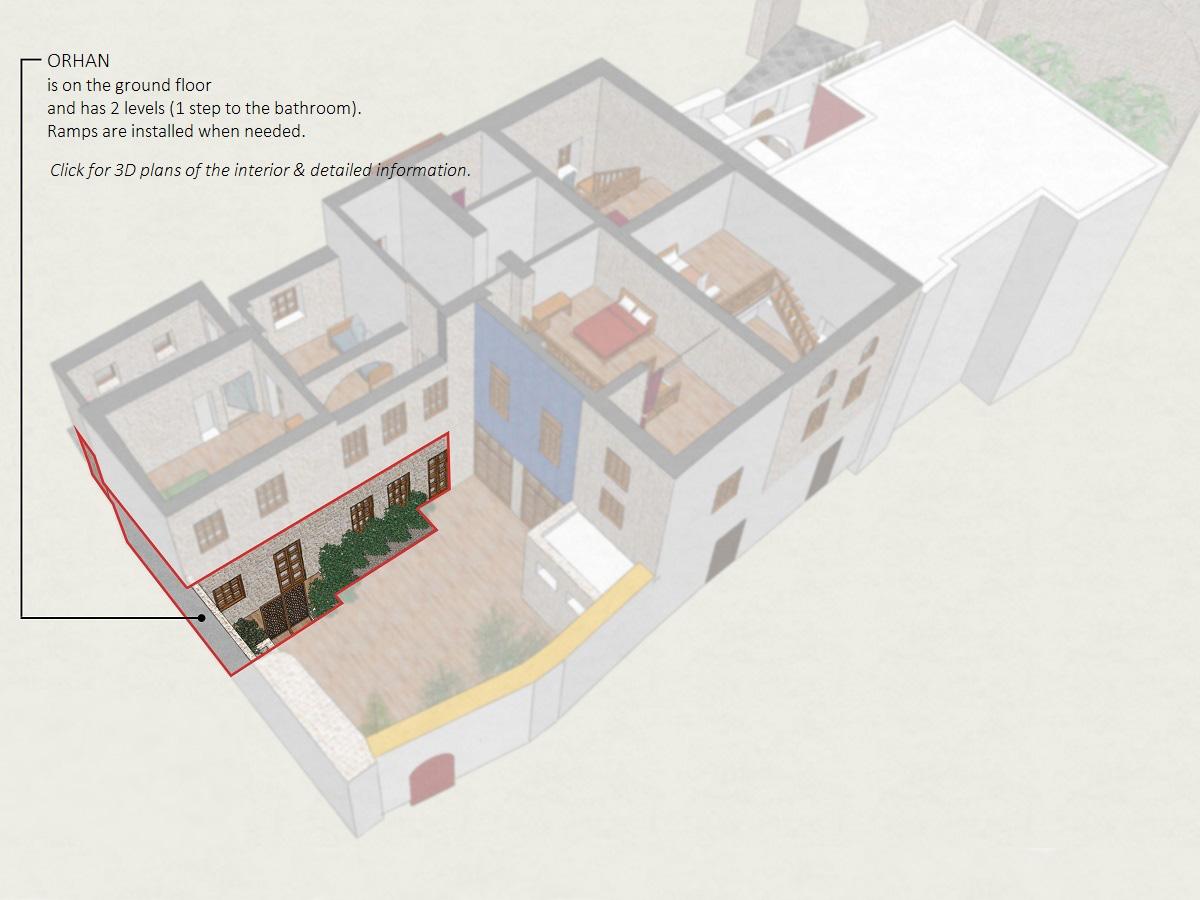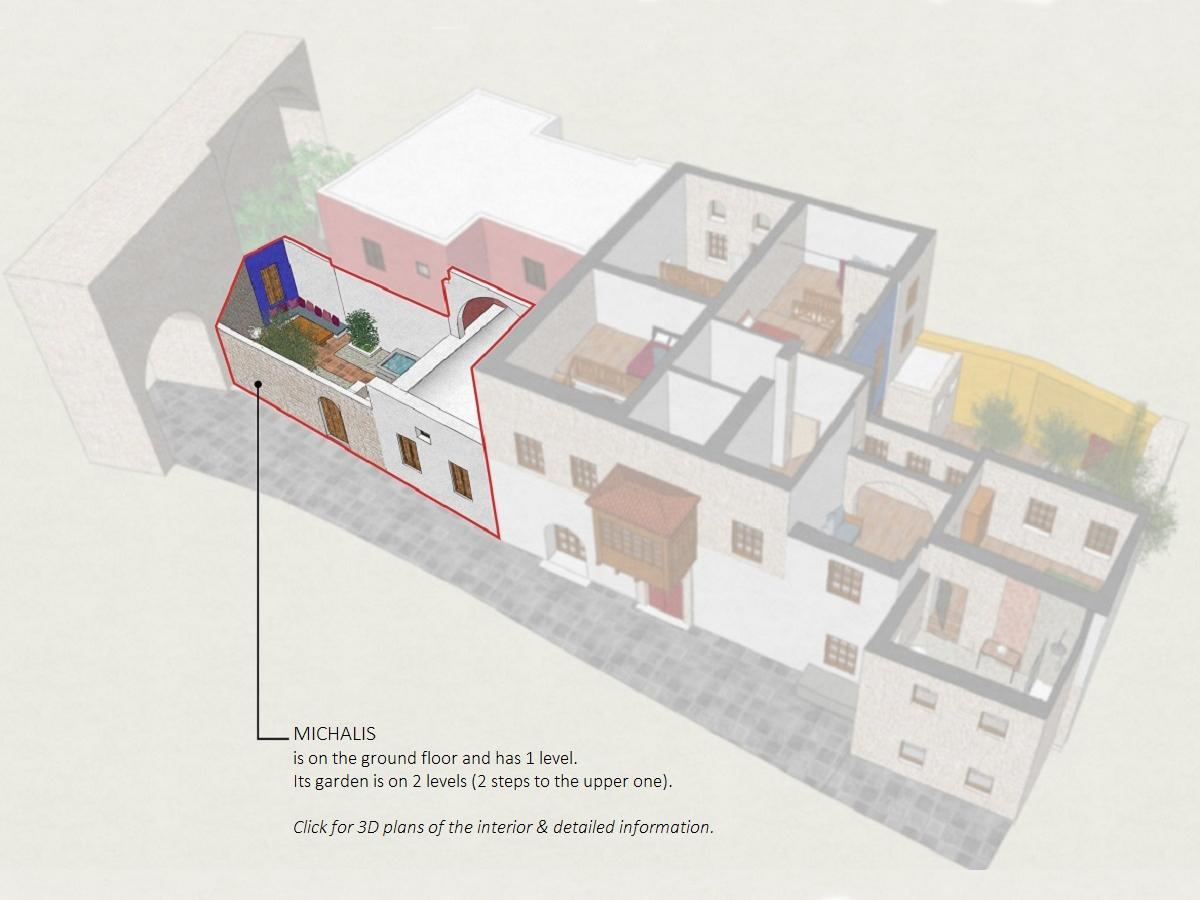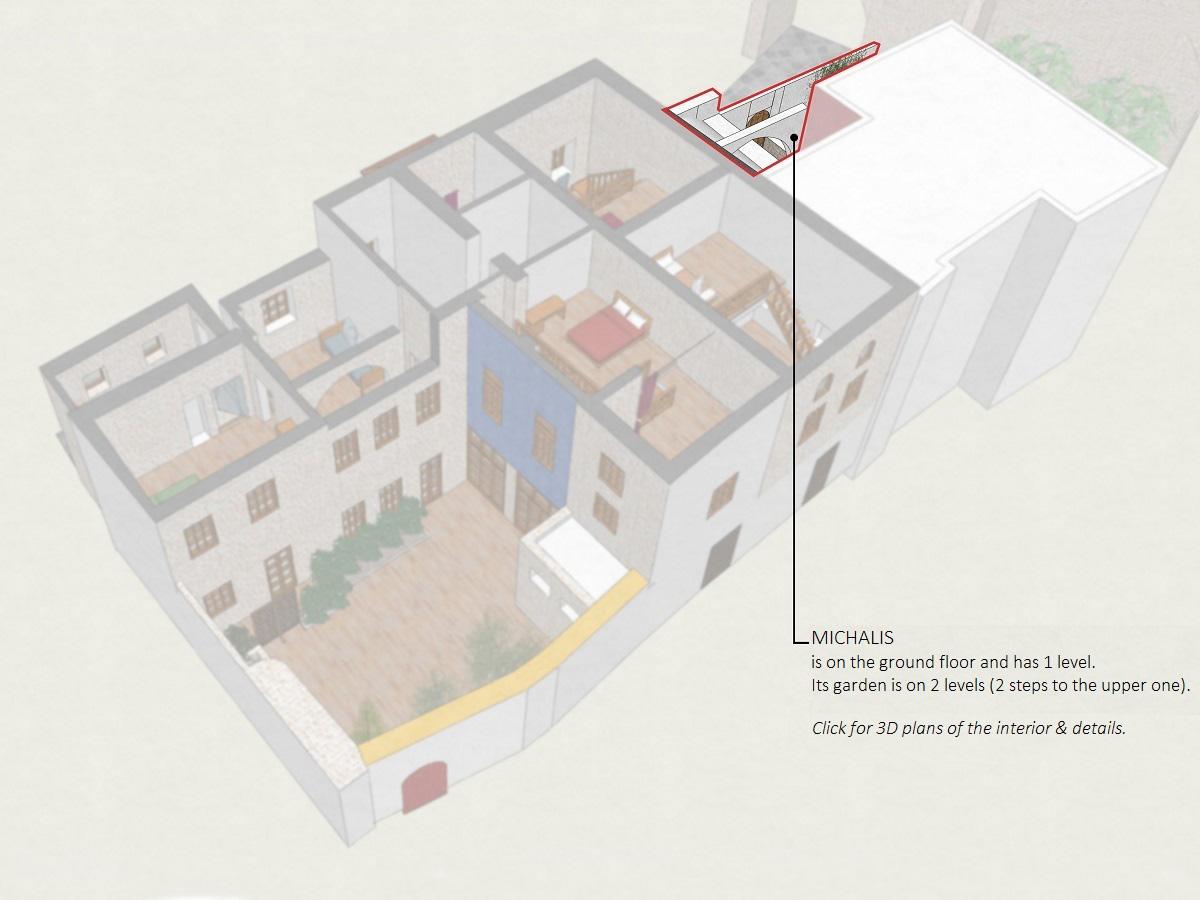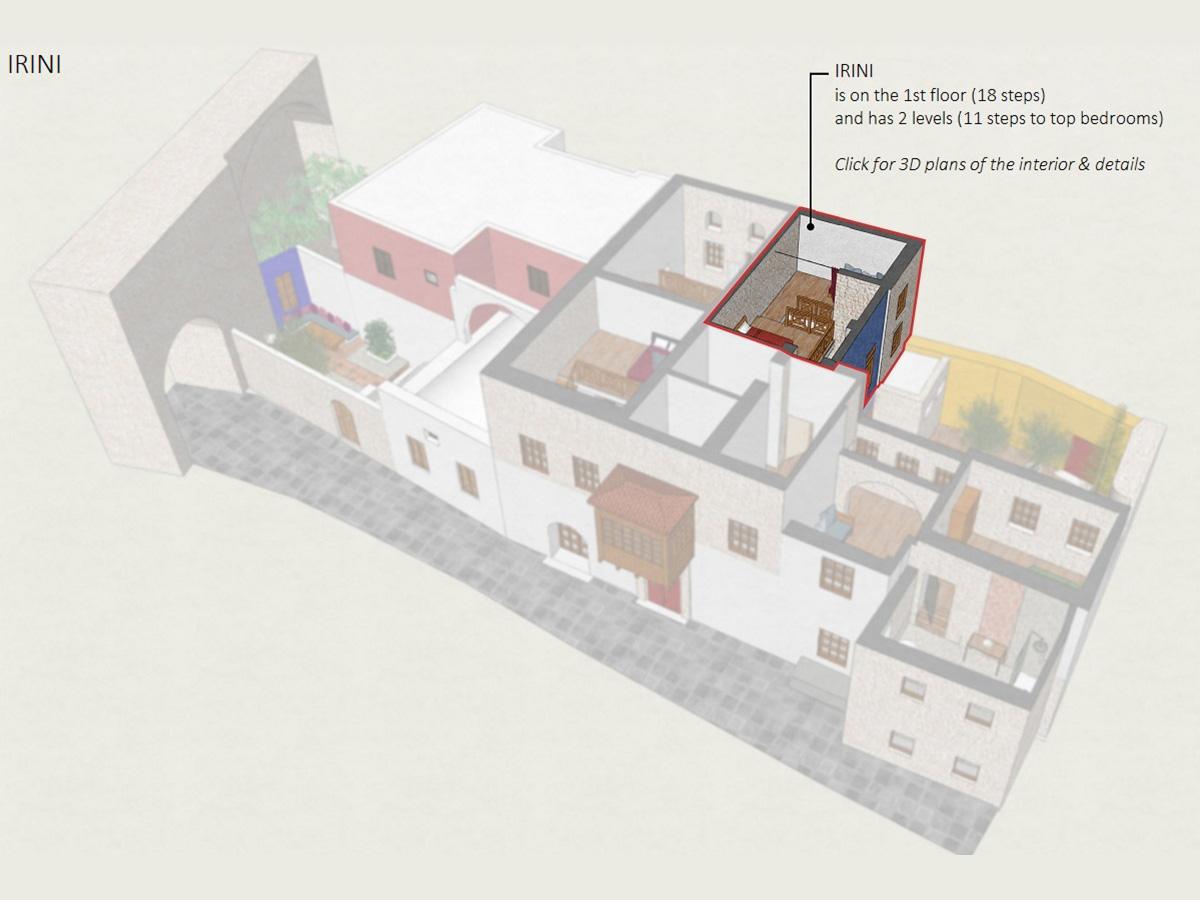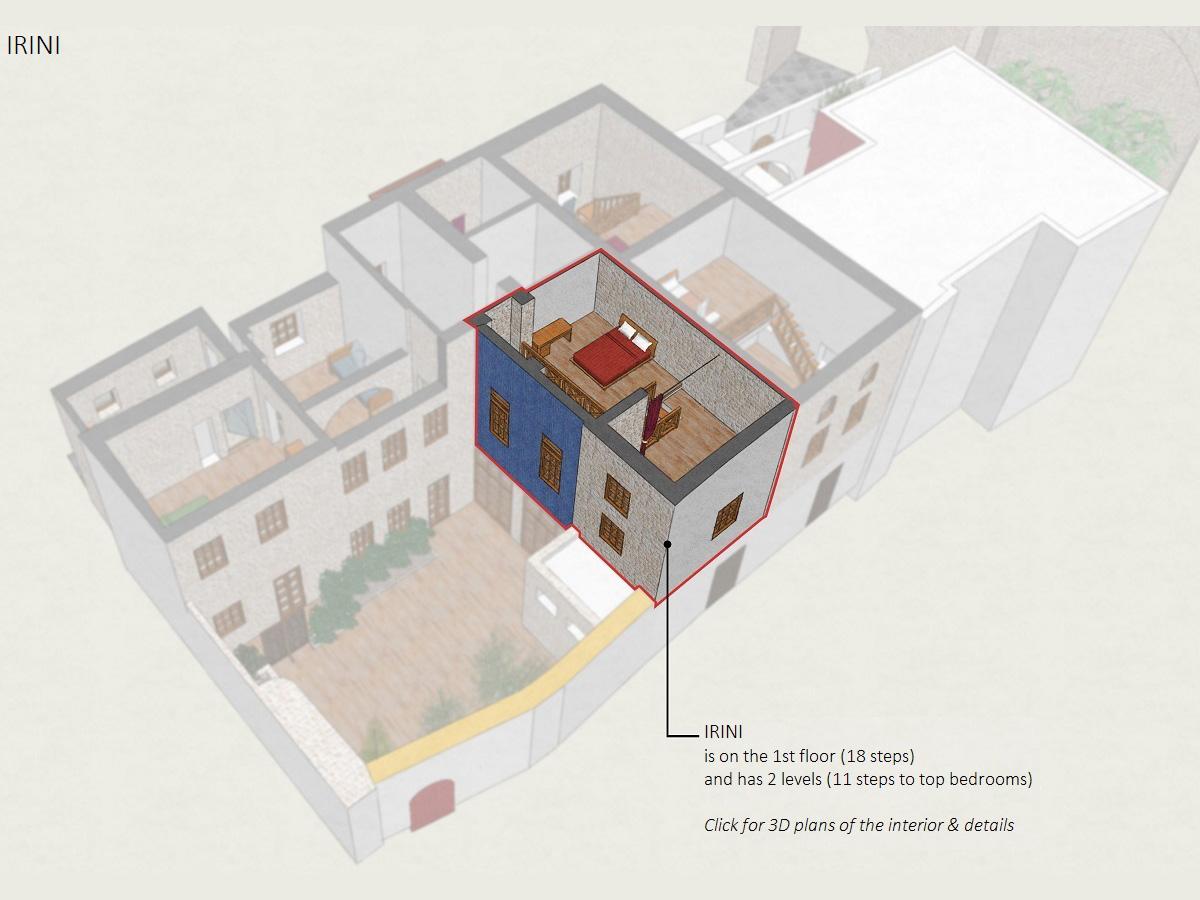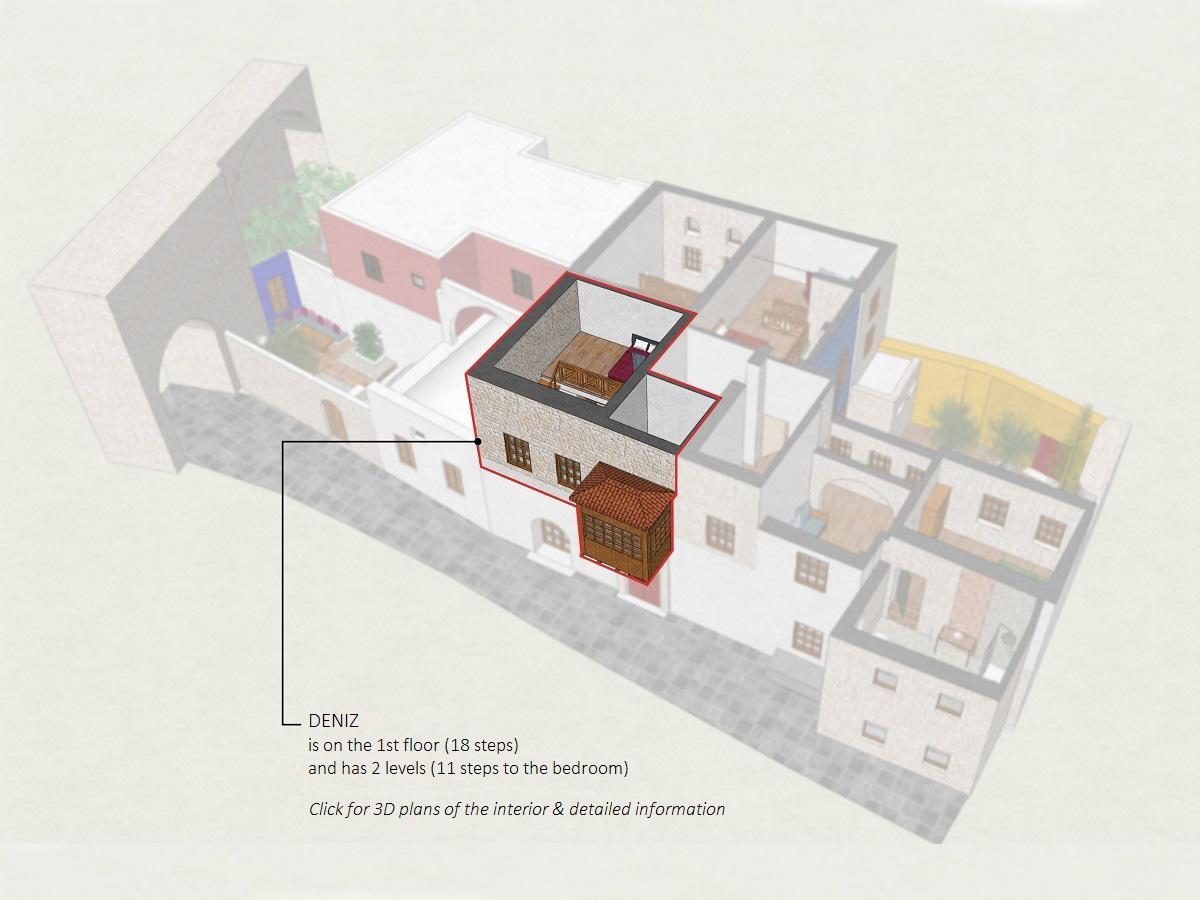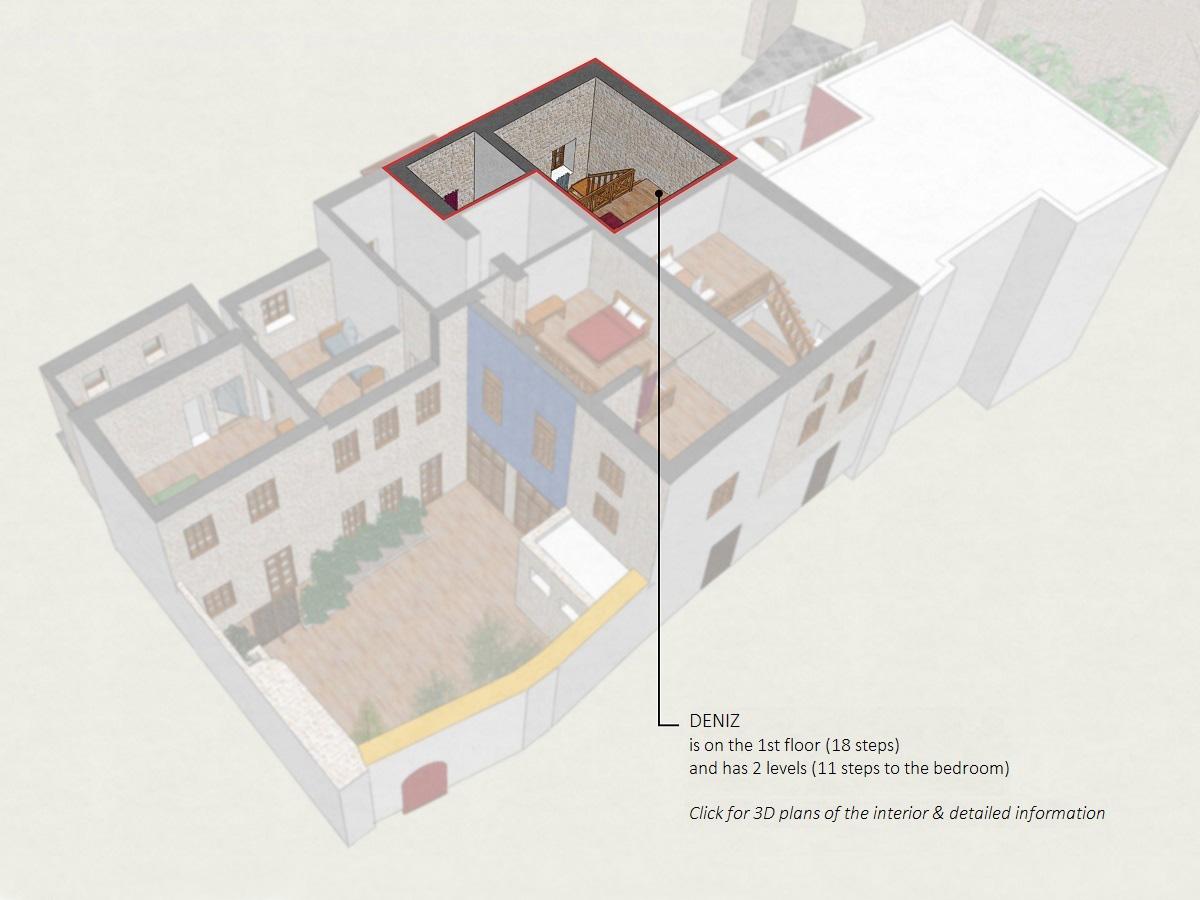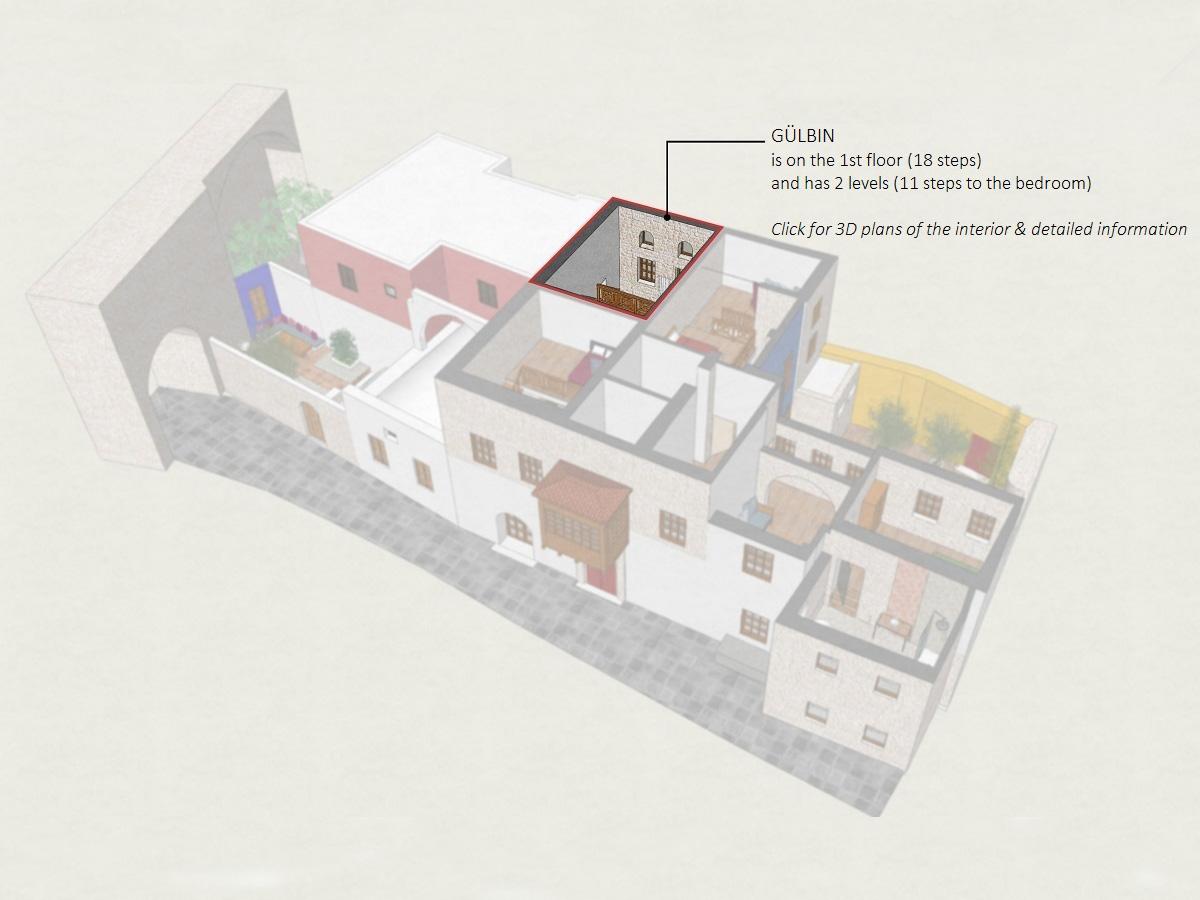The church was built around 1470 next to the fortification wall, near the Gate of the Fort’s southern flank.
It is dedicated to the patron of the Knights’ Order of St. John.
It stands where a two-storey residence of a knight once stood, and was originally on its ground floor.
The courtyard entrance and a first-floor window are the only remains of that house.
The Gate – as expected – was named after St. John.
It is also known as “Kókkini Porta” (Red Gate), to remind the Greeks of those who lost their lives defending it.
Alterations to the defense wall, artillery assaults, and, later, the fall of Rhodes in the hands of the Ottomans waged their toll on the building and its fresco hagiographies.
Soon after the occupation, it was converted into a mosque.
The knight’s residence was torn down by the knights in 1510, to free space for the defensive wall’s reinforcement.
Finally, despite the defenders’ heroic efforts, the Town was conquered by the Ottomans in 1523.
When life regained its normal course, much of the materials were utilized by an Ottoman Aga for his own mansion.
It is said that this house had always been hospitable to whoever sought refuge in it, regardless of ethnic origins or religious confession.
Following this tradition, we converted the premises into a hotel that will make all visitors feel welcome. Checking in with us should be more of a homecoming.
We are proud to have contributed to the reinstatement of the construction and the hagiographies.
The Hellenic Ministry of Culture has since entrusted us with the premises of the Church of St. John.
We are taking care of it, allowing for the peace and calmness missed over the last six hundred years to be restored.
Those wishing to share its memories are welcome.
We are happy to let them into what we know about the church, its links to the Gate, the neighborhood, and the Castle.

